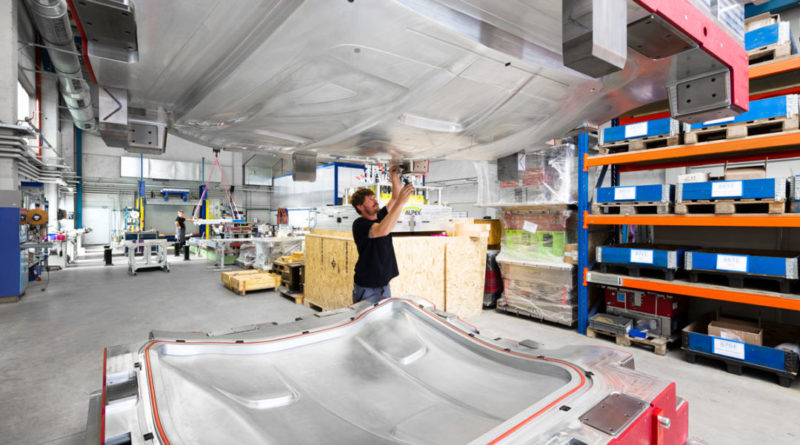Preparing the manufacturing of a new seat concept for aircraft
In HAIRMATE, a project that received grant from the Clean Sky programme, first prototypes of the passenger aircraft seating structure developed in the previous HAIRD project will be manufactured and tested. The HAIRD design showcases many advantages compared to conventional passenger seats: it is healthier, lighter, cost-effective and recyclable.
In HAIRD, a new seat concept was designed targeting the reduction of Deep Vein Thrombosis (DVT) risk, multi-functionality and suitable geometry for composite manufacturing. In HAIRMATE, the moulds will be designed in detail considering the composite manufacturing techniques of Sheet Moulding Compound (SMC), Wet Compression Moulding (WCM) and Prepreg Compression Moulding (PCM) co-moulded with SMC. Metal inserts are joined with the polymers with a nano-porous adhesion layer.
A Life Cycle Assessment, which is a systematic analysis of the environmental impact of products during their entire life cycle, will be carried out. The project will collect data of materials and processes and will be used to do an assessment of the seat’s life cycle to guarantee the new design and manufacturing improvements in terms of sustainability. Moreover, different tests will be performed to define the mechanical and fire safety properties of the materials for the manufacturing of the seat. They were mechanically characterized from experimental tests of the newly developed material to be used to produce the seat.
The objectives of HAIRMATE consist in the manufacturing of a new generation passenger aircraft seat prototype, assessment of the environmental impact within a full life cycle of the HAIRD seat, extensive characterization of new composite materials, validation of the HAIRD seating following standard tests to ensure the structural reliability, and getting the new generation aircraft HAIRD seating close to the market.
The HAIRMATE seat design has multiple advantages: Firstly in regards to passenger health, which can be attributed to the foldable footrest; it is made with new lightweight materials and innovative manufacturing techniques; it is less costly, as the seat is manufactured by using efficient, semi-automated manufacturing systems for composite materials. Finally, it has fewer parts than the initial HAIRD design, with 95% of the seat weight being recyclable.
A multi-tool system is used for production of the individual parts: The inner SMC backrest, the external WCM backrest, the external SMC seat base and the inner WCM seat base. For each of these components, a specific mould inlay can be mounted in the master tool. The master mould is combined with four die plates (inlays) of differing size and varying manufacturing technologies. The main idea of this concept is to investigate the manufacturability of the backrest and seat base using different manufacturing technologies with versatile and intelligent tooling systems. For now, the design phase has been finalised and the first analysis of the moulds have been carried out. Therefore, the manufacturing of the moulds should start soon. On the other hand, the new materials developed by Fraunhofer ICT have been tested and characterized at coupon level.
The Clean Sky 2 Joint Undertaking has awarded a grant of more than 800,000 euros to HAIRMATE, which is led by Leitat and supervised by Fraunhofer Institute for Chemical Technology (ICT). The project partners are ALPEX, an Austrian company specialized in tooling for composites, and the AMADE (Analysis and Advanced Materials for Structural Design) research group of the University of Girona.
This project has received funding from the European Union’s Horizon 2020 research and innovation programme under grant agreement No 821300. This publication reflects only the author’s views and the European Union is not liable for any use that may be made of the information contained therein.

